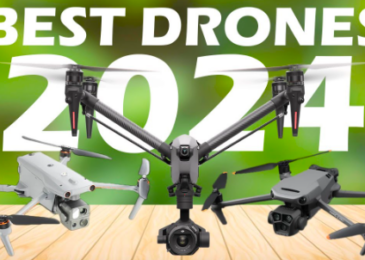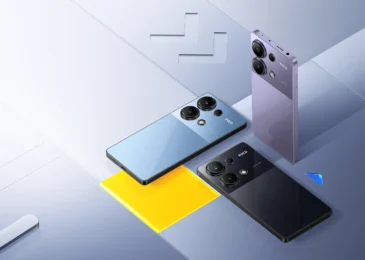Computer monitors for professionals and consumers are diverging, and that divergence is for acceleration. LCD screens are giving way to mini-LCD monitors with higher resolutions. And it is good for those who mainly use them for work at home or in the office. OLED monitors have come and are becoming popular on both the personal and commercial sides due to their deep blacks and bright colors and other innovative features.
The monitors using LCD technology are replacing the venerable CRT monitors on most desktops due to lower energy consumption and unique design. Computer monitors are evolving. If you want to buy a new unit in Canada, you must know these 5 different types of monitors that you may not know. This will help in making an informed decision and choosing the right product.
LCD Monitor
LCD (Liquid Crystal Display) is a flat panel unit that uses liquid crystals in its primary form of operation. It is the most used computer monitor on the global ground. Why? Because of its compact design, less space-capturing shape, lower energy consumption, and the quality of producing less heat compared to the old CRT monitor.
Better graphics quality and a fine brighter screen display that consumes hardly any electricity is a plus. Overall, LCD monitors are very cost-effective in terms of image quality, lightweight, energy consumption, easy portability, etc.
Buying an LCD Monitor
- Choose a 24-inch monitor with 1080p resolution
- Pick a 27-inch monitor with 1440p resolution
- If you’re a gamer, go with a 144Hz refresh rate
- 27-inch and 32-inch models are better at 1440p (2560×1440) resolution
- 4K (3840×2160) is perfect for larger monitors.
- Check interaction of devices like ports, speakers
LED Monitor
LED (Light Emitting Diode) monitors are the latest addition. Competing with LCDs and Plasma monitors, these units may have a slight curve or can have a flat display. Instead of cold cathode fluorescent CCFL, they use light-emitting diodes for backlighting on the screen. With 4k resolution, they give even bright pictures.
- LED monitors produce images with higher contrast and vivid colors
- They’re more durable than LCD and CRT Monitors
- These screens deliver a flicker-free image
- They reduce eye strain and fatigue, and headaches
- They offer long life expectancy and use less power
- They’re thinner, have greater contrast and more vivid colors
- Further, LEDs are ideal for perfect for high graphics and HD games
Buying an LED Monitor
- Choose a full HD screen resolution (1080p)
- 15-inch is OK for portability if you travel frequently
- Bigger is always better for gaming and movies
- 75Hz or higher refresh rate is recommended for games
OLED Monitor
OLED (Organic Light Emitting Diode) monitors are flat display units consisting of pixels made from OLEDs that don’t require backlighting to function. These monitors have high contrast, rich colors, and outstanding contrast levels. No ghosting, deep black, low power, wide viewing angle, and fast response time for action scenes are some other benefits.
One more undeniable advantage is its viewing angles which are vastly superior to any LCD display. These monitors are thinner or lighter with a higher contrast ratio than LCDs. Choose them especially to watch movies, or play games.
Buying an OLED Monitor
- Choose 1080p (1920 x 1080), 4K (3840 x 2160) and 1440p (2560 x 1440) resolution depending on your need.
- Go for a high refresh rate for a 4K resolution or 3D content
- If you travel frequently, then choose a compact OLED monitor, with a maximum 15-inch.
- To display data in Excel sheets, a 21-27-inch big OLED monitor is OK.
- For movies or games, choose a larger screen size
Plasma Monitor
A plasma monitor is another type of computer display in which each pixel on the screen is illuminated by a tiny bit of plasma. When compared with CRT monitors, plasma units are thinner. This flat display is brighter than LCD and can reduce image distortion and glare. They offer superior performance, good response, and a wide viewing angle. The best plasma screens support high resolutions like 1680 x 1050 and 1920 x 1080, which provide sharp details of things.
Buying a plasma monitor
When choosing a plasma monitor, check its screen size, resolution, aspect ratio, connectivity type, speakers, response time, color depth or picture quality, power consumption, or energy efficiency.
- Pick one with at least an HD screen resolution (720p)
- Or you can go for a full HD screen resolution (1080p)
- For portability, 15-inch is the right size
- For gaming and movies, bigger is always better
- Choose a higher refresh rate, from 75Hz and upwards
- Check connectivity types like DisplayPort, HDMI, VGA and DVI
CRT Monitor
Do you want to level up your retro gaming experience? If so, go for a CRT monitor or Windows Gaming Laptops. Yes, you read it right. This old hardware equipment has come back with more exciting and outstanding features. So, it has its perks. Most models offer higher refresh rates and a better contrast ratio than LCD monitors. So, you’ll enjoy the rich and deep content look.
Buying a CRT Monitor
- Always opt for the best on a high-end CRT monitor if you’re among that sub-culture of first-person shooter fans who swear on FPS games.
- A display with a refresh rate of 60 HZ and 75 HZ could be good for gaming.
- A higher refresh rate will let you experience smoother output with less blur.
- Pick a CRT monitor with high resolution which is very important for gaming.
- Stick with the newer CRT monitor with a display size between 15 and 21 inches.
Ready to buy a new monitor? Before making any decision, determine why you need a new display unit. Why are you buying this? Is the model you are choosing perfect for your work at home, office work, or playing games? Based on your requirements, buy one that is most suitable to meet your needs.






